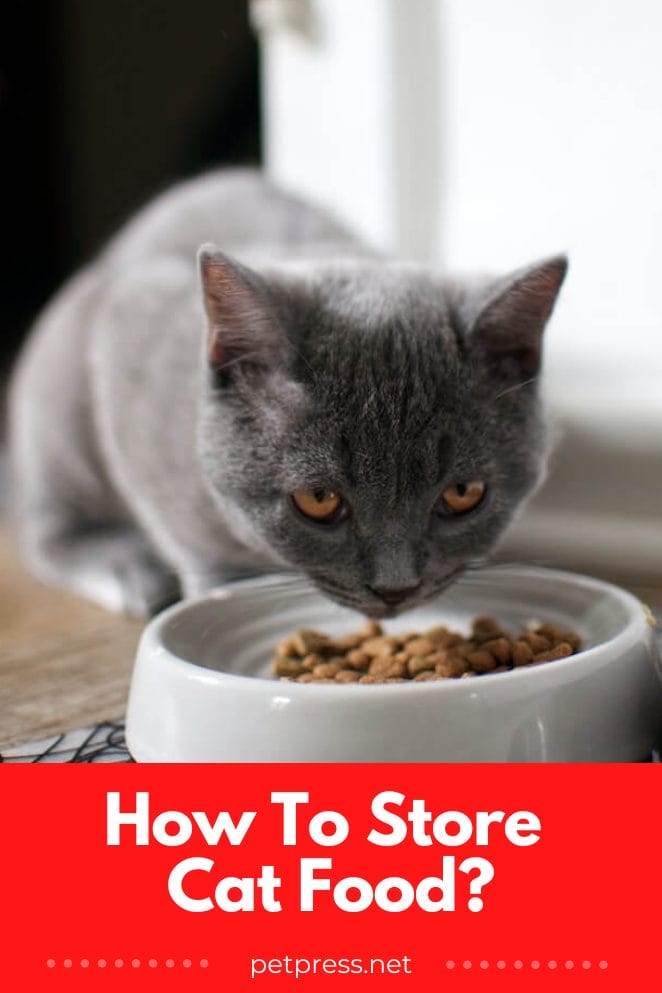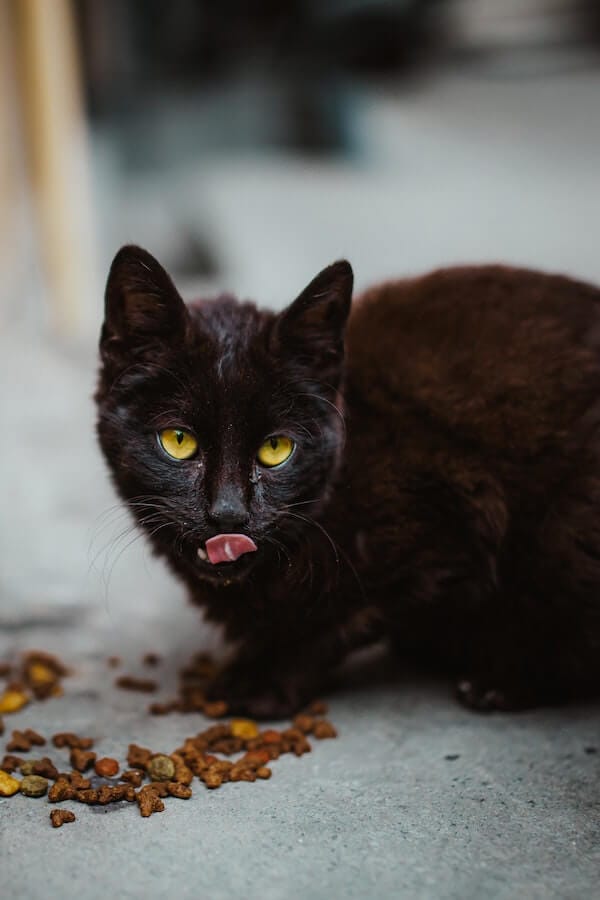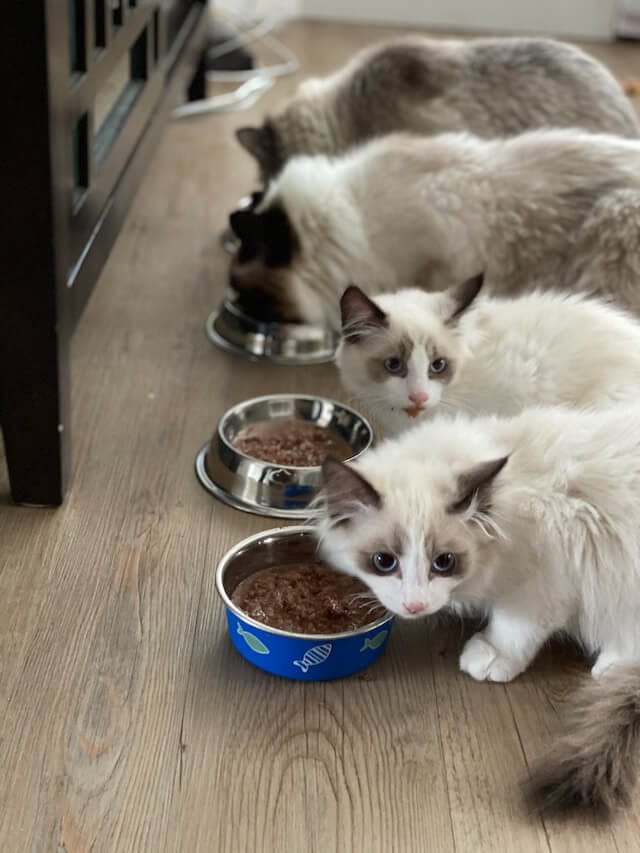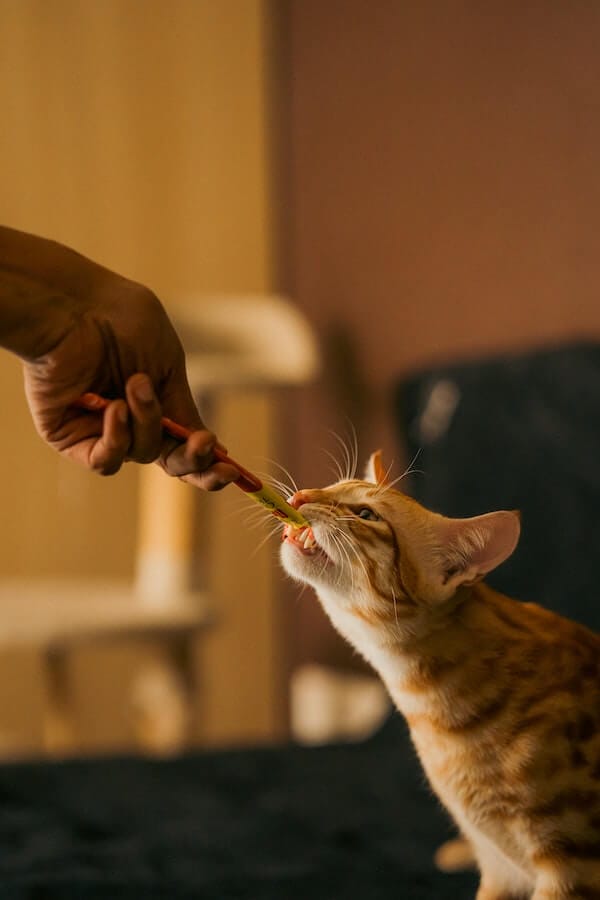
Cats love their food, and as many of us have noticed, so do mice! To make sure our furry friends get the nutrition they deserve – and to keep little critters from feasting on their dinner. It’s important to know how to store cat food properly.
Many pet owners don’t realize that where you store cat food can mean the difference between a healthy and well-fed kitty\ lurking in your pantry. So sit back, relax, and let this guide help you learn all about storing cat food.
From selecting an airtight container to learning how long you can store opened packages of wet and dry cat food; this guide has all the information you’ll need for storing your feline’s food properly.
When it comes to your cat’s health and well-being, there’s no excuse not to store their food the right way! Let’s get started.
How To Store Cat Food
It’s no surprise that cats are some of the pickiest eaters around. That’s why it’s so important to store their food properly in order to maintain its freshness and flavor.
Whether you have dry or wet cat food, there are a few guidelines you should follow when storing your pet’s meals. Here are 10 tips for storing cat food like a pro:
1. Keep dry kibble in an airtight container.
It is important to keep your kibble fresh by keeping it out of direct sunlight and away from heat sources such as a stovetop.
Make sure you choose a container with an airtight seal to protect against moisture, pests, and bacteria.
2. Store wet food in the refrigerator.
Wet cat food can spoil quickly if left out, so make sure you store it in the fridge until feeding time. You can also freeze wet cat food for up to three months. Just be sure to thaw it thoroughly before feeding!
3. Use separate containers for dry and wet foods.
Keeping your cat’s wet and dry foods separate will help maintain their freshness and prevent contamination of one type of food with another.
4. Label each container with the date you first opened it.
This will help you keep track of when to replace the food and ensure that it is not being kept longer than necessary.
5. Keep food away from areas where your cat can’t access it.
Cats are curious creatures and may try to get into areas where their food is stored. If possible, keep your cat’s food in an area they cannot reach.
6. Discard any wet or dry food that has been left out for more than two hours.
If your cat is not eating food given to them then its time to throw it out. It is important to discard any cat food that has been left out for too long, as bacteria can quickly form on the surface and cause illness if ingested by your pet.

How do you store cat food long-term?
Keeping your cat’s food fresh and tasty is always the goal when it comes to meal-time, but how do you store cat food long term?
Whether you buy large bags of kibble or mix up a batch of homemade meals, proper storage can help keep your pet’s dinner delicious.
When it comes to kibble, start with an airtight container that will fit the entire bag. It’s important to keep the lid closed tight after each use and since cats aren’t usually fussy about portion sizes. Try measuring out specific portions into smaller containers prior to feeding time so that they don’t overindulge.
For wet food, use an airtight container and place it in the refrigerator for up to three days after opening. It’s not recommended to freeze wet cat food unless you are preparing homemade meals as they may lose their flavor upon thawing.
If you’re making your own cat food, using fish, meat or vegetables, storing portions in freezer bags or other plastic containers can help keep it fresh. Just be sure to label each package so you know what’s inside!
When reheating, always make sure that the food is heated evenly and never leave any leftovers out at room temperature for more than two hours.

What is the best material to store cat food in?
When it comes to storing cat food, there are a few materials that can be used. Glass jars are an excellent option for those who want to keep their furry companions’ meals fresh and odor free.
Not only do they provide an airtight seal, but they also look great in the kitchen or pantry. A downside to glass jars is that they can break if dropped, so caution should be taken when handling them.
Another material that can be used is resealable plastic bags. This type of bag provides an easy way to store dry foods and treats for cats.
They come in various sizes, making them suitable for as much (or as little) food as desired. The major benefit of these bags is that they are lightweight and can easily be taken along when traveling.
The downside to plastic bags is that they are not as airtight as glass jars, which means that moisture can get in and food can spoil faster.
Lastly, plastic jars are also an option for storing cat food. They provide an airtight seal and are generally more durable than glass jars.
However, try to keep plastic as a last option as it is not eco-friendly and can contain toxins that can leach into your cat’s food.

Conclusion
When it comes to storing cat food, keeping your pet’s meals safe and fresh is key. With the right containers, and proper labeling, you can easily store cat food like a pro!
So go ahead and give your furry friends the nutrition they deserve – without inviting unwanted critters to their dinner table!
- 7 Dog Breeds With Webbed Feet And Why Do They Have Them - July 19, 2023
- 10 Best Fish For Small Tanks That Make Perfect Pets - July 18, 2023
- How to Breed Guinea Pigs: A Detailed Guide - July 17, 2023


GIPHY App Key not set. Please check settings